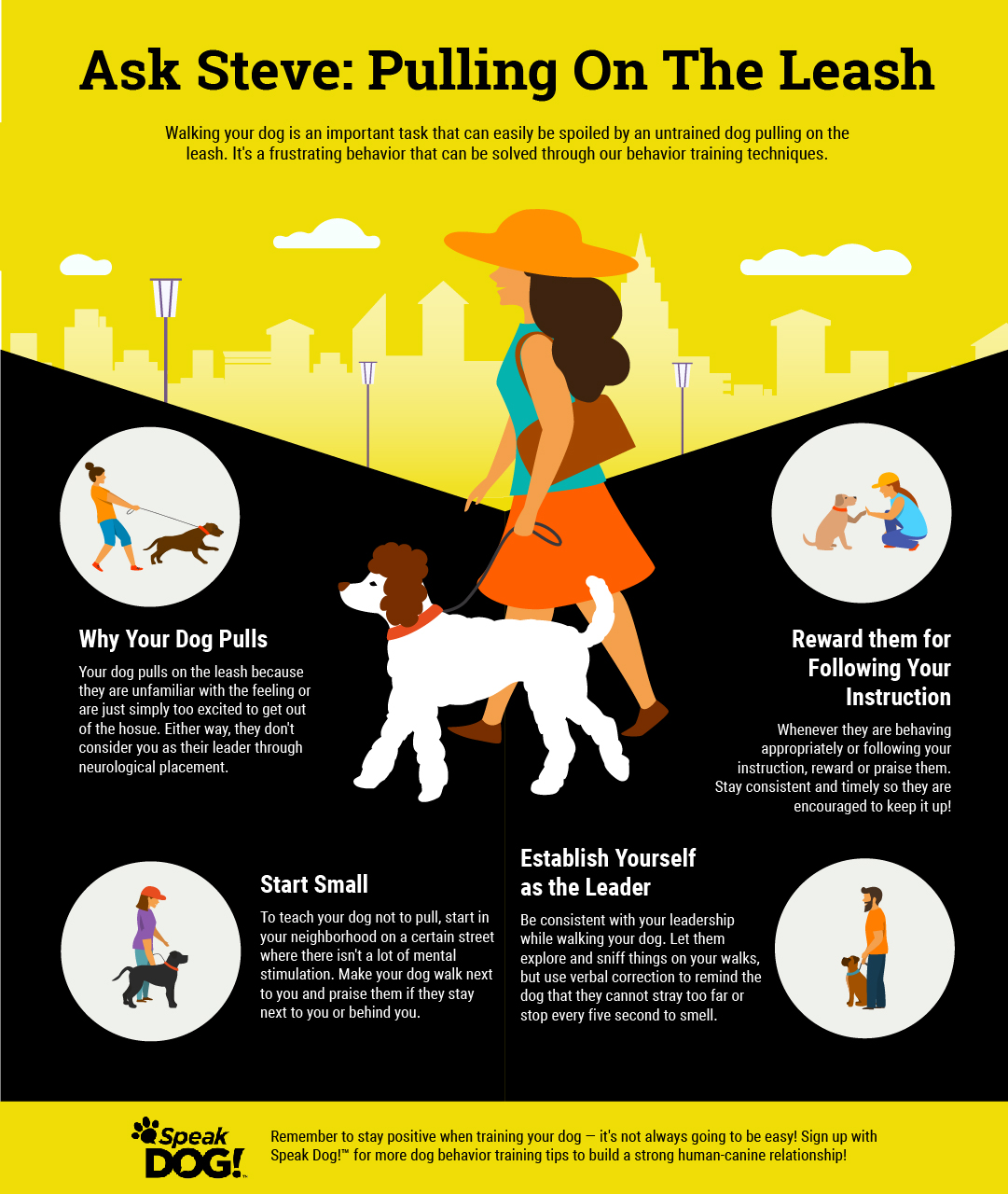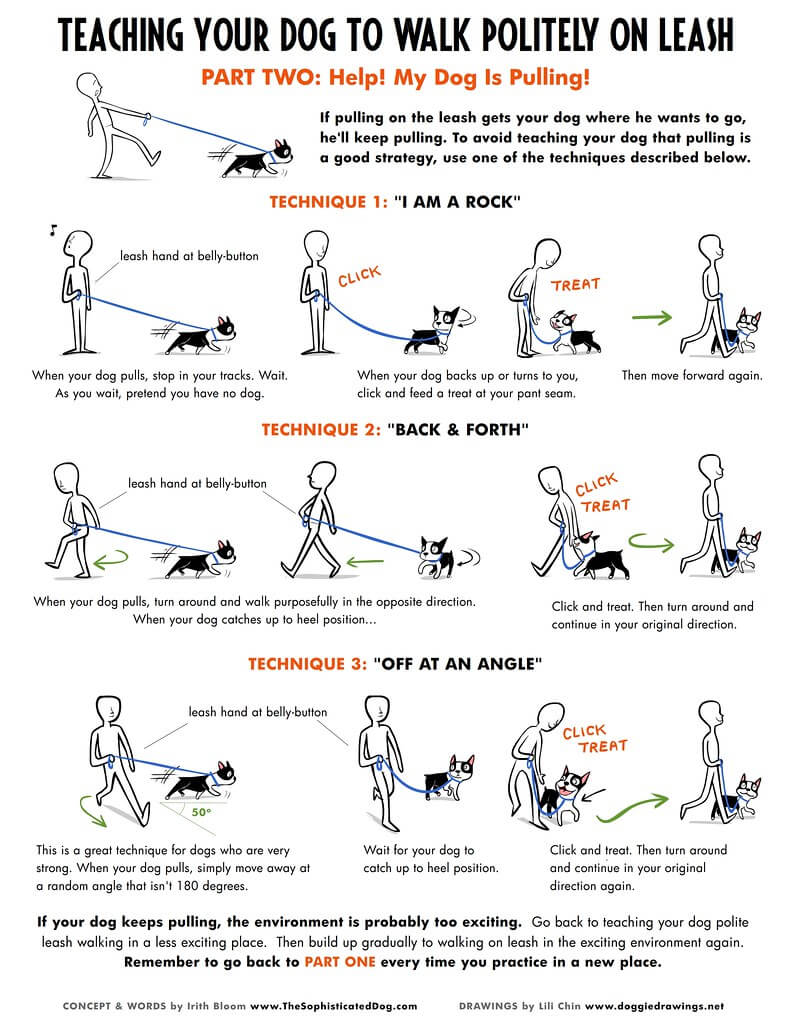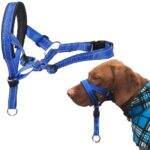Training Tips for Pets with Pulling Behavior: How to Stop Leash Pulling for Good
Leash pulling is a common frustration that many dog owners face. Whether it’s an energetic puppy or a more mature dog, dealing with pulling on walks can turn what should be an enjoyable experience into a stressful chore. However, with the right techniques and consistent training, training pets with pulling behavior can be managed effectively. In this article, we’ll provide you with proven strategies to reduce leash pulling, ensuring your walks are calm, controlled, and enjoyable for both you and your dog.
By understanding why dogs pull and using the right training methods, you can turn pulling into polite walking behavior. Let’s dive into some key tips and tricks to help you regain control during your walks.
Why Do Pets Pull on Leashes?
The Natural Response to Leash Pressure
Pulling on the leash is not a behavior your dog is consciously choosing to annoy you—it’s actually a natural instinct. When dogs feel tension on the leash, their immediate response is to move forward. This is rooted in their hunting and exploring instincts, where moving forward means they’re getting closer to something of interest. When a dog pulls on the leash and gets to move forward, they’re essentially being rewarded for the behavior.
Key points about why dogs pull:
- Instinctual behavior: Pulling on the leash comes from your dog’s instinct to explore and move forward.
- Reinforced by outcomes: If pulling results in forward movement, dogs are likely to repeat it.
- Excitement: Dogs pull when they’re excited, especially on walks when they anticipate fun or adventure.
The Role of Attention and Focus
Another major factor contributing to pulling behavior is your dog’s attention. When dogs are distracted by their surroundings—other dogs, people, smells, or noises—they are more likely to pull, as their focus is not on you. Teaching your dog to pay attention to you while walking will drastically reduce pulling.
- Lack of focus: If your dog is constantly distracted, pulling becomes a habit.
- Training attention: Helping your dog focus on you while walking will minimize the urge to pull.
Effective Training Techniques to Reduce Pulling Behavior
1. Establish a Walking Position
One of the first things you should do in leash training is to establish a consistent walking position for your dog. Decide where you want your dog to walk—ideally at your side—and consistently enforce this position throughout the walk. Every time your dog starts pulling, use a verbal cue like “uh-uh” or “no” and gently guide them back into position.
Steps to establish a walking position:
- Choose the position: Decide if you want your dog to walk at your side or in a specific position.
- Use cues consistently: If your dog starts to pull, use the cue to bring them back into position.
2. Stop Forward Motion Technique
When your dog starts pulling, the most effective response is to stop moving entirely. This technique helps your dog understand that pulling leads to no progress. Wait for your dog to stop pulling, look back at you, or return to the right position before continuing the walk. This teaches them that pulling doesn’t get them where they want to go, but walking calmly does.
Steps for the stop motion technique:
- Stop walking as soon as your dog pulls.
- Wait for a pause or for your dog to look back at you.
- Reward with praise or a treat when your dog stays in position.
Why this works:
- Dogs quickly learn that pulling results in stopping, while walking calmly allows progress.
- It teaches self-control and focus during walks.
Positive Reinforcement: Reward Good Behavior
Another essential aspect of training is positive reinforcement. This involves rewarding your dog when they behave appropriately, like walking calmly beside you. For example, whenever your dog looks at you or walks nicely, reward them with praise or a treat. This helps reinforce that walking calmly results in rewards, making it more likely they will continue the behavior.
3. Rewarding Eye Contact and Good Walking Behavior
Positive reinforcement works best when it’s immediate. Every time your dog walks at your side or makes eye contact with you, mark the behavior with an enthusiastic “Yes!” followed by a treat. This tells your dog that calm, focused behavior is what earns them rewards.
Benefits of positive reinforcement:
- Encourages attention and focus on you during walks.
- Increases motivation for your dog to walk calmly without pulling.
4. Silky Leash Training
The Silky Leash technique is another highly effective method for reducing pulling. This involves applying gentle pressure to the leash and waiting for your dog to relax before releasing the pressure. This method teaches your dog that pulling does not lead to any progress, but relaxing and yielding to the pressure will.
How to use Silky Leash Training:
- Apply gentle pressure when your dog pulls.
- Wait for your dog to relax or stop pulling.
- Reward the relaxation by releasing the pressure and continuing the walk.
Choosing the Right Equipment for Leash Training
While training techniques are crucial, the right equipment can significantly enhance your training process. Consider using tools designed specifically to discourage pulling and make the learning process more comfortable for both you and your dog.
No-Pull Harnesses
No-pull harnesses are designed to reduce pulling behavior by redistributing pressure across the dog’s chest rather than their neck. These harnesses are particularly helpful for dogs that tend to pull hard, as they redirect their attention back to you instead of allowing them to continue pulling forward.
Benefits of No-Pull Harnesses:
- Reduces pulling force on the dog’s neck and chest.
- Redirects attention and encourages your dog to walk calmly by your side.
- Comfortable for your dog, making training less stressful.

ALT text: Dog walking calmly with a no-pull harness.
Head Collars and Leashes
Another great tool for managing pulling behavior is the head collar, such as the Gentle Leader or Halti. These collars control your dog’s head movements, which in turn guides the body, making them very effective for dogs that are strong pullers.
Key benefits of head collars:
- More control over your dog’s head, making it easier to guide them.
- No discomfort for your dog while controlling pulling behavior.
- Ideal for strong, energetic dogs who struggle with pulling.
Internal Link Suggestion:
In the next section, we’ll explore additional training tips to help ensure success, such as starting in low-distraction areas and maintaining a consistent routine. Stay tuned for more helpful advice!
By implementing these training tips for pets with pulling behavior, you’ll be well on your way to enjoying stress-free walks with your dog. And remember, the right equipment, combined with consistent training, can make all the difference.
Call to Action:
Get the best no-pull harness for your dog today and start training with the right tools. Use the discount code mytopdeals10 to get 10% off your purchase!
This is the first half of your comprehensive guide on training pets with pulling behavior. We’ve covered why dogs pull on the leash and some effective training techniques to reduce pulling. Stay tuned for more tips and solutions in the next section!
Additional Training Tips for Success
1. Start with Short, Low-Distraction Walks
When beginning your leash training, it’s important to choose low-distraction areas where your dog can focus on the task at hand. Parks, busy streets, or areas with other dogs can overwhelm your dog, making it harder for them to concentrate on the walk. Start in quieter locations, such as your yard or a quiet street, and gradually build up to more stimulating environments.
Key benefits of starting in low-distraction areas:
- Increased focus: Your dog will be more likely to stay focused on you rather than distractions.
- Faster learning: It’s easier to reinforce good walking behavior in a controlled environment.
- Confidence-building: Starting in a familiar, calm area helps boost your dog’s confidence in training.
2. Be Patient and Consistent
Training takes time and requires a lot of patience. Dogs learn best when they have consistent training sessions and clear expectations. Set aside time each day to work on your dog’s leash manners, and keep training sessions short and positive. Over time, your dog will learn that calm walking brings rewards.
Why consistency is key:
- Clear communication: Dogs thrive on routine, and consistent commands and expectations help them learn faster.
- Repetition: Repeating training exercises daily strengthens your dog’s understanding of desired behavior.
- Long-term success: With patience and practice, your dog will make significant progress in their leash manners.
3. Provide Adequate Exercise for Energy Control
Excess energy can lead to more pulling on the leash, as your dog may be more excited to explore. To reduce pulling, ensure your dog gets enough physical exercise outside of walks. Engage them in playtime or other activities like fetch, tug-of-war, or agility exercises to burn off extra energy before heading out for a walk.
Benefits of adequate exercise:
- Reduces pulling: A tired dog is less likely to pull.
- Better focus: Exercise helps your dog focus better during walks, reducing distractions.
- Improved behavior: Regular exercise helps reduce behavioral issues in general, not just pulling.
4. Seek Professional Help if Needed
If you find that your dog continues to pull despite consistent training, it may be time to seek professional help. Professional trainers can offer personalized guidance and help with more advanced techniques. Many trainers specialize in leash manners and can provide hands-on training to address your dog’s specific needs.
When to seek professional help:
- Persistent pulling: If pulling continues to be a challenge despite your best efforts.
- Behavioral issues: If your dog is showing other behavioral challenges that are affecting walks.
- Expert guidance: Trainers can offer insights and strategies that you may not have considered.
Frequently Asked Questions (FAQs)
What makes Found My Animal products unique?
Found My Animal products stand out because they offer high-quality, customizable pet accessories designed with both style and functionality in mind. Their collars and leashes are made from durable materials like PPM rope and climbing rope, ensuring they’re both comfortable and built to last. Plus, you can personalize your dog’s collar with your pet’s name, contact details, or even fun phrases, making it a unique accessory for your furry friend.
How can I use the discount code mytopdeals10 at checkout?
To use the discount code mytopdeals10, simply visit Found My Animal’s website, select your desired items, and proceed to checkout. Enter the code mytopdeals10 in the promo code box, and you’ll receive a 10% discount on your order. It’s that simple!
What’s the best way to stop leash pulling?
The best way to stop leash pulling is by using consistent training techniques such as stopping when your dog pulls, rewarding calm behavior, and using a no-pull harness. Starting in low-distraction areas, being patient, and consistently rewarding good behavior will help your dog learn to walk calmly beside you. Make sure to also exercise your dog beforehand to burn off excess energy.
Conclusion: Improve Your Dog’s Leash Manners with Consistency
In conclusion, training pets with pulling behavior requires patience, consistency, and the right techniques. By using strategies like the stop motion technique, positive reinforcement, and the right training equipment, you can help your dog learn to walk calmly on a leash. Additionally, providing adequate exercise and seeking professional help when necessary will further improve your dog’s leash manners.
Remember, leash training is a process, but with consistent effort, you can transform your walks from chaotic to calm. The key is patience, consistency, and positive reinforcement. Start today, and soon you’ll be enjoying peaceful walks with your well-behaved companion.
Call to Action:
Get your customizable leash and harness today and start your journey towards stress-free walks! Use the discount code mytopdeals10 for 10% off your purchase and enjoy walks like never before.

ALT text: Effective leash training tips to stop pulling behavior in dogs.
This is the second half of the article on training pets with pulling behavior. By applying these tips and techniques, you’ll have the tools you need to teach your dog to walk calmly and enjoyably.


